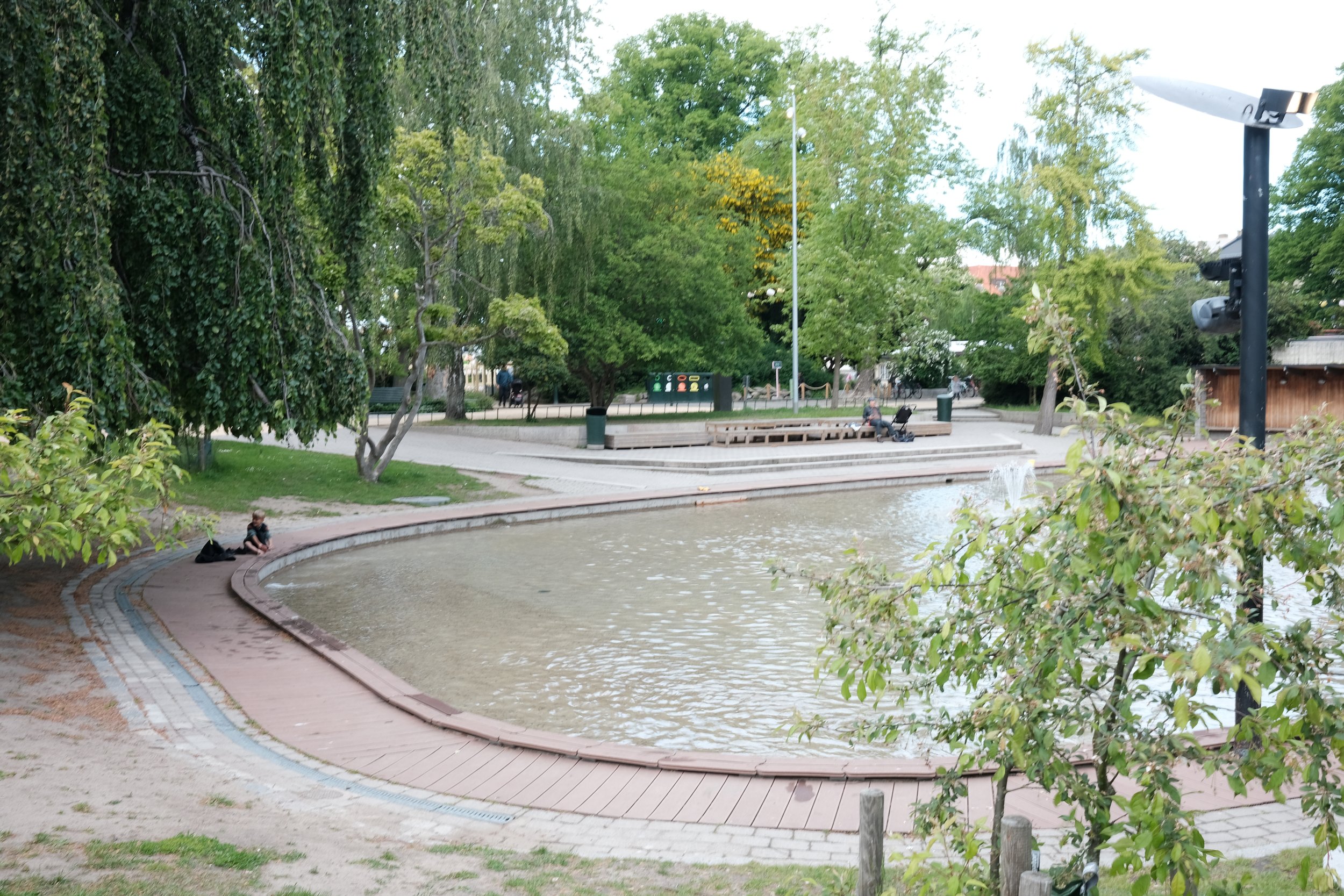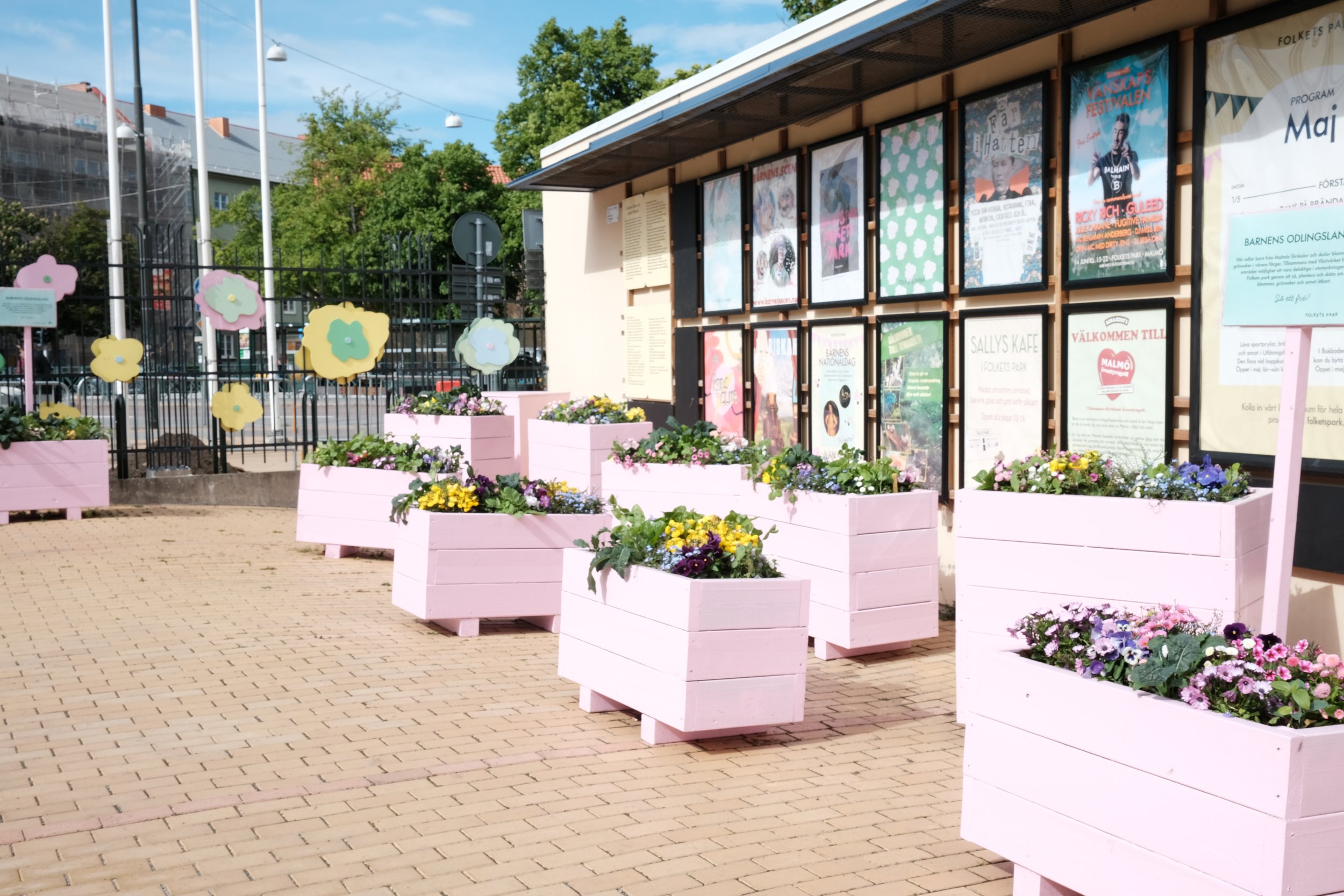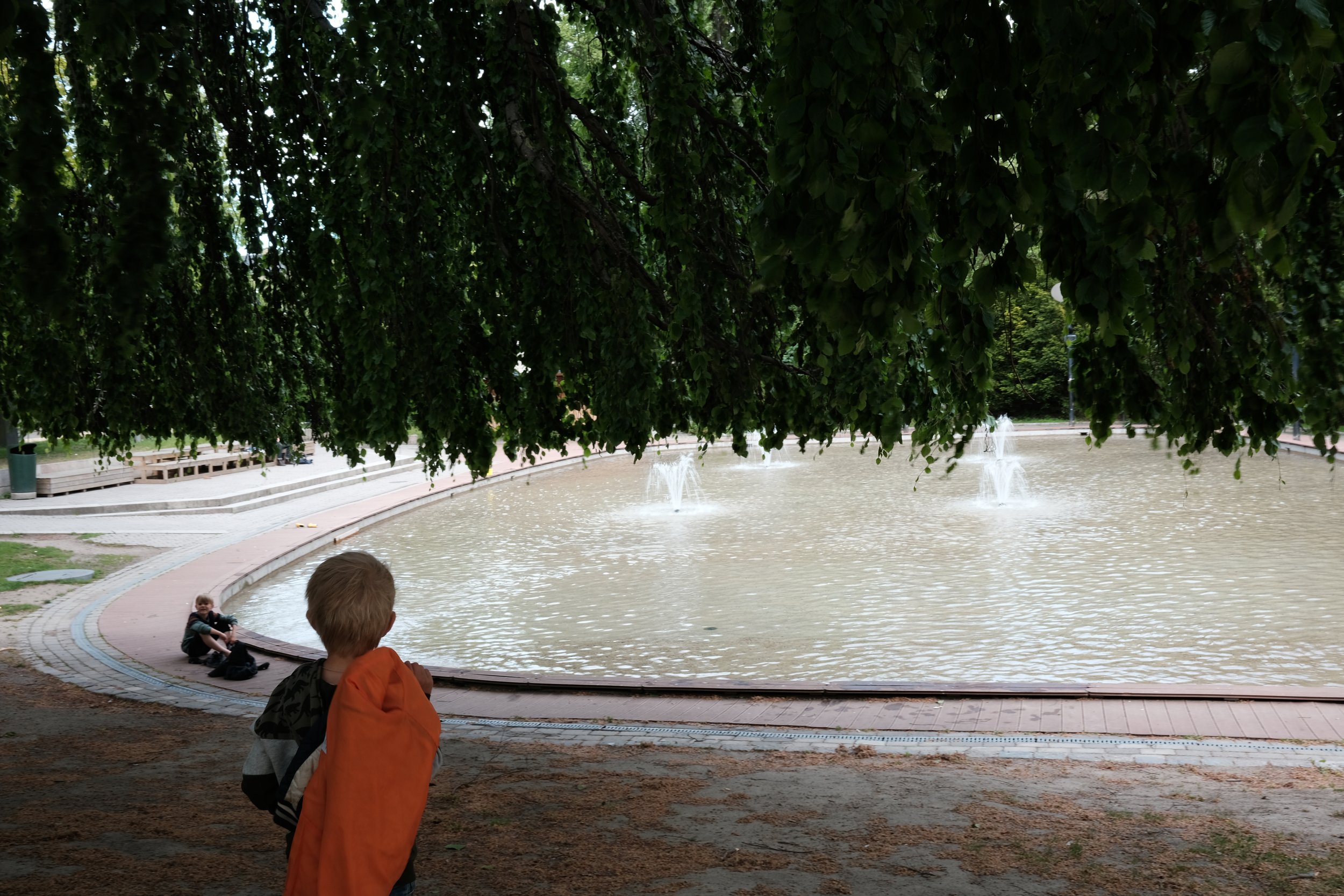How to Create Parks for the People
When you think of parks, you may think of places for children to play, socialize, and let off steam. As important as these spaces are to meet children’s needs, many parks leave out other people in their design who have similar needs - if not the same.
These are people of different ages, sizes, and abilities. For example, parents and caregivers who take children to parks, teens who seek out parks for free socializing, or community members who gather in parks for all sorts of reasons.
Folkets Park, a public park in Malmo Sweden, directly translates to “The People’s Park” - which definitely lives up to its name. It considers more than just children in its design around the areas of play, socialization, and movement, serving as a great inspiration for Canadian public parks. Here's how they did it.
Parents and Caregivers
Before or after jumping into play, parents and caregivers often need to complete daily errands as part of balancing child and home care. These groups, which are mainly made up of women, are usually - if not always - balancing childcare with home care. This means that having a space for play near home and everyday services is essential for comfort and convenience.
To create this access Folkets Park is located in the residential neighbourhood of Östra Sorgenfri surrounded by grocery stores, local shops, restaurants, and one of the city’s most popular bus stops.
Entrance way to Folkets Park. Photographed by Sharee Hochman.
Parks are typically built with structures that are sized for children, limiting parents and caregivers ability to engage with them in play. This often pushes them to watch from a distance, like sitting on benches. While having this option is still essential to give rest for caretakers and some freedom to children, it limits interaction.
In Folkets Park, play structures are designed with parents in mind. Building medium-sized, unprescribed, and attractive structures helps to foster more interaction, overall helping in building a greater sense of connection between children and those caring for them.
Parents and Kids playing on a medium-sized skate ramp. Photographed by Sharee Hochman
Parks can help invite parents and caregivers to play by designing areas for movement that do not foster competition, such as a mini, colourful basketball court.
Mother playing basketball with her son. Photographed by Sharee Hochman.
Additionally, when looking at areas of play, it is crucial to consider those who may use mobility aids and may need ramps to access structures, such as grandparents.
Ramp leading to a colourful platform. Photographed by Sharee Hochman.
Ramp leading to basketball court. Photographed by Sharee Hochman.
Folkets park also has cafés and seating areas that, of course, can serve anyone in the park, but seem to especially attract parents to rest, chat with friends, and enjoy their time in the park.
Parents and children at a cafe stand in Folkets Park. Photographed by Sharee Hochman.
Parents sitting and standing around play area socializing with each other. Photographed by Sharee Hochman.
Teen Girls
Often teen girls’ needs, such as well-thought public seating, noncompetitive recreation areas, and visibility of others, are left out of park designs. Accordingly, many teen girls are seen as invaders in public spaces, as they are too old and loud for the playground but too young and broke for cafes and restaurants. Oftentimes, the mall becomes a common space for them, rather than outdoor green spaces.
Folkets Park includes teen girls by adding versatile designs that suit these needs. This group wants spaces to chat, linger, and lounge without having to pay for food or drinks. They also want to be in public spaces where they have high visibility of others for safety, without being easily seen by others.
The seating design in the park accomplishes this with lounge style, diverse options for seating, and leaning. The design also creates cozy, yet private, areas without being completely excluded.
Wide lounge style chairs in a corner of Folkets Park. Photographed by Sharee Hochman.
Platforms to sit and play on the basketball court under shade. Photographed by Sharee Hochman.
Colourful swing chair in Folkets Park. Photographed by Sharee Hochman.
Teen girls may begin to spend more time out in the late evening and night time, making it essential to provide lighting for a greater sense of safety.
Colourful swing chairs in Folkets Park at night. Photographed by Sharee Hochman.
Similarly to parents, teen girls want spaces to move their bodies and play that are not over competitive and foster more connection. This is not to say teen girls do not want spaces for competitive sports like soccer and ultimate frisbee, but there are limited non-competitive options. This is because parks have been typically designed to meet the needs of young boys, which emphasize physical competition.
Folkets Park incorporated non-competitive spaces by building un-descriptive structures. They can be used for dance, acting, and jump rope. It can also be used for other nonphysical activities like beading, reading, and picnics!
Colourful wooden platforms for activities. Photographed by Sharee Hochman.
Community Members
Community members, such as organizations, schools, and volunteer groups need places to meet, too! To serve these groups, parks can be an accessible place to complete work, rest, and refuel.
Folkets Park incorporates these needs into structures like extended tables, seating under shade and near water, and café stands.
Curving table for people to work and gather at. Photographed by Sharee Hochman.
Curving table for more people to work and gather at. Photographed by Sharee Hochman.
Tree providing shade around seating and green space area. Photographed by Sharee Hochman.
Pond with areas for sitting, leaning, and shade. Photographed by Sharee Hochman.
Tables outside of a cafe stand in Folkets Park. Photographed by Sharee Hochman.
Furthermore, the park helps those looking to become involved in the community by posting posters of weekly programming at the park, including events.
Posters and monthly programming signs at entrance of Folkets Park. Photographed by Sharee Hochman.
Side entrance to Folkets Park with programming signs. Photographed by Sharee Hochman.
Mother and daughter playing at the stage for events. Photographed by Sharee Hochman.
And lastly, Folkets Park can just be a space to sit with your friends, have a small BBQ with family, and enjoy a safe space to gather at night.
People walk, gather, and sit at Folkets Park at night. Photographed by Sharee Hochman.
Parks are for Everyone
Parks often leave out the needs of certain groups of people in their design. Not only does this exclude and marginalize people, it also leaves out the potential to use space more effectively by meeting the needs of everyone.
What we’ve learned from Folkets Park is that the design is multi-use and mostly unprescribed. It can be used for parents to play, gather, and move their bodies. It can also offer a safe space for teen girls to linger, dance, and socialize. As well, offering a free space for different community members to use for whatever their needs may be.
All while still offering children a fun, safe, and active public space to be a kid.
Girl climbing on grass hills. Photographed by Sharee Hochman.
Boys sitting near pond. Photographed by Sharee Hochman.
Children climbing over colourful rock hill. Photographed by Sharee Hochman.


























